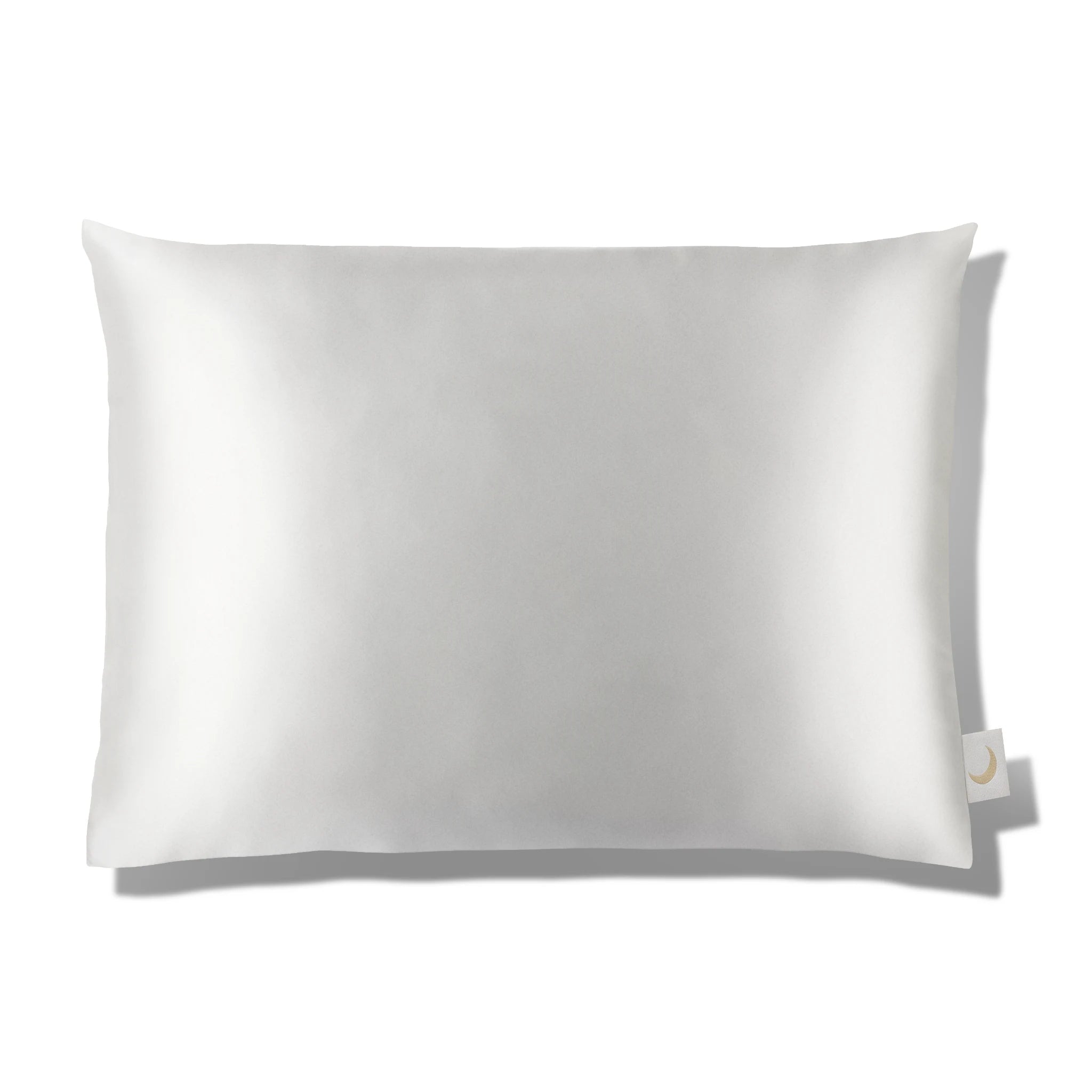Human brain waves are neural activity: electrical patterns generated by neurons in the brain that can be measured using electroencephalography (EEG). There are various brainwaves, each associated with specific mental states and activities. Understanding the different brain wave frequencies and how we can enter and use them can help us to improve our cognitive abilities and overall well-being. Understanding different brain waves and brain activity gives us fundamental understanding of how to relax better and therefore sleep better.
Brain Wave Frequencies
There are five main types of brain waves, each associated with a different frequency range:

-
Gamma Waves (30-100 Hz)
Gamma brainwaves are our brain state of super-consciousness. Gamma waves are the fastest brain waves and are associated with high levels of concentration and focus. High amplitude or higher frequencies are linked to a higher aroused state. Gamma brainwaves are also linked to creativity, problem-solving, and increased cognitive function. Gamma brainwaves are typically produced when the brain is engaged in challenging cognitive tasks or during moments of heightened awareness.
-
Beta Waves (12-30 Hz)
Beta brain waves are associated with active, focused thinking and are the most common brain waves in the waking state. Beta waves are our normal waking state. Beta brainwaves are linked to increased alertness, problem-solving, decision-making, and active conversation. High beta brainwaves can lead to anxiety, stress, and restlessness.
-
Alpha Waves (8-12 Hz)
From beta to alpha - when we transition from the conscious to the subconscious mind. Our brain stops talking to us and we get creative. Alpha brain waves are associated with a relaxed, calm state of mind and are often present during meditation and other relaxation techniques. Alpha waves aid improved creativity, memory, and learning. They are linked to reduced stress and anxiety.
-
Theta Waves (4-8 Hz)
Theta brainwaves are associated with deep relaxation and are often present during sleep and deep meditation. They are linked to enhanced creativity, intuition, and visualization. Theta waves are also associated with decreased levels of stress and anxiety. The doors are wide open to the subconscious. This is where we can install a new wave of being and surrender to being.
-
Delta Waves (0.5-4 Hz)
Low frequency delta waves are the slowest brain waves and are associated with deep sleep and unconsciousness. They are linked to physical healing and regeneration, as well as reduced levels of stress and anxiety. Delta sleep is dreamless sleep. It is important for physical restoration, as the body uses this time to repair and regenerate tissues, produce hormones, and regulate the immune system.
Brain Function for Falling Asleep
Delta waves are the brain waves associated with deep sleep and unconsciousness. During the delta activity state, the brain and body are in a state of deep relaxation, and the brain is primarily focused on physical healing and regeneration. This is why deep sleep is so important for overall health and well-being.
During a typical sleep cycle, the brain moves through several different stages of sleep, each characterized by specific brain wave frequencies. The first stage of sleep is characterized by alpha and theta waves, as the brain begins to falling asleep, relax and transition into sleep. As the body continues to relax, the brain enters the delta state, characterized by slow delta waves.
During the delta state, the body experiences physical restoration, including tissue repair and growth, hormone production, and immune system regulation. Delta sleep is essential for maintaining a healthy body and mind, and a lack of deep sleep can lead to a variety of health issues, including depression, anxiety, and a weakened immune system.
In conclusion, delta waves are the brain waves associated with deep sleep and physical restoration. By understanding the different stages of sleep and the role of delta waves, we can take steps to improve the quality of our sleep and promote overall health and well-being.
Science of Brain Waves and Sleep
A study investigated the relationship between delta wave activity in the brain and sleep deprivation. The authors found that delta wave activity increased significantly after sleep deprivation, suggesting that it is a useful marker of sleep loss [1].
Researchers used EEG to investigate brain wave activity during slow-wave sleep (SWS) and its relationship to memory consolidation. The authors found that SWS is characterized by slow oscillations in the brain, and that these oscillations play an important role in memory consolidation [2].
Another study investigated the relationship between gamma and theta wave activity in the brain and episodic memory. The authors found that gamma and theta oscillations are involved in different aspects of memory processing, and that their coordinated activity is important for effective memory encoding and retrieval [3].
How to Use Brain Function and Enter Different Brain Wave Frequencies
There are several ways to enter and use different brain wave frequencies, including:
-
Meditation
Meditation is one of the most effective ways to enter alpha and theta brain wave states. By focusing on the breath or a mantra, you can quiet the mind and enter a state of deep relaxation. Regular meditation practice has been shown to improve cognitive function, reduce stress and anxiety, and promote overall well-being.
-
Breathing Exercises
Breathing exercises, such as deep breathing and alternate nostril breathing, can help to slow down the breath and induce a state of relaxation. This can lead to an increase in alpha and theta brain waves and a reduction in beta waves.
-
Binaural Beats
Binaural beats are an auditory technique that involves listening to two different frequencies of sound, one in each ear. The brain perceives the difference between the two frequencies as a third frequency, which can entrain the brain into a specific brain wave state. For example, listening to binaural beats with a frequency of 10 Hz in each ear can induce an alpha brain wave state.
-
Neurofeedback
Neurofeedback is a technique that involves using EEG to monitor brain waves and provide feedback to the individual in real-time. By learning to control their brain waves, individuals can improve their cognitive function, reduce stress and anxiety, and promote overall well-being.
-
Alpha-theta Training
Alpha-theta training is a neurofeedback technique that involves training the brain to enter a state of deep relaxation and increased creativity by increasing the amount of alpha and theta brain waves. This type of training has been used for several decades as a therapeutic intervention for a variety of mental health conditions, including anxiety, depression, post-traumatic stress disorder (PTSD), and addiction.
The goal of alpha-theta training is to help individuals achieve a state of deep relaxation and improved creativity. This can be especially helpful for individuals who experience high levels of stress and anxiety or who struggle with creative blocks. By learning to enter an alpha-theta state, individuals can access deeper levels of creativity and relaxation, leading to improved overall well-being.
Brain Waves and Sleep – Conclusion
In conclusion, understanding the different brain wave frequencies and how we can enter and use them can help us to improve our cognitive abilities and overall well-being. By practicing meditation, breathing exercises, listening to binaural beats, or using neurofeedback, we can learn to control our brain waves and achieve a state of relaxation, creativity, and focus.
There are several ways to improve the quality of deep sleep, including practicing good sleep hygiene, such as maintaining a consistent sleep schedule, avoiding caffeine and alcohol before bed, and creating a calm and comfortable sleep environment, ideally with organic bedding, a black out sleep mask and a calming bedroom. Additionally, practicing relaxation techniques, such as meditation or breathing exercises, can help to slower brain waves and thus calm the mind and promote deep, restful sleep. When we sleep better, we look, feel and act better.
Sources:
- Tarja Porkka-Heiskanen et al. (1995). EEG delta power as a marker of sleep deprivation.
- Matthias Mölle et al. (2006).Human cortical oscillations during slow-wave sleep with implications for memory consolidation.
- Charan Ranganath et al. (2003). Functional role of gamma and theta oscillations in episodic memory.
- Gustavo Deco, Adrián Ponce-Alvarez, and Morten L. Kringelbach (2013). The Dynamic Brain: From Spiking Neurons to Neural Masses and Cortical Fields. PLOS Computational Biology.
- J. Allan Hobson and Edward F. Pace-Schott (2002). The Neurodynamics of Dreaming. Journal Neuroscientist.
- Robert T. Knight (1998). The Functional Significance of EEG Rhythms in Sleep. Journal Clinical Neurophysiology.
- Daniel J. Buysse and Ellen Frank (1997). A Review of Sleep EEG in Depression: Evidence for Theta and Alpha Activity Abnormalities. Journal Sleep.
- M. Travis and R. W. Gevirtz (2007). The Effects of Meditation on Alpha and Theta Brainwaves. International Journal of Psychophysiology.
- Frederick Shaffer and Yuan Yuan (2015). The Effects of Binaural Beats on Cognitive Processing. Journal Alternative Therapies in Health and Medicine.
- J. F. Gruzelier (2014). Neurofeedback as a Treatment for Anxiety Disorders: A Review of the Evidence. Journal Brain and Behavior.
- M. A. Smith (2001). The Neurobiology of Brainwaves During Sleep. Sleep Medicine Reviews.
- T. Collura, B. Guan, and R. Tarrant (2016). The Use of Alpha-Theta Brainwave Training for the Treatment of Posttraumatic Stress Disorder in Military Veterans. Journal NeuroRegulation.



















